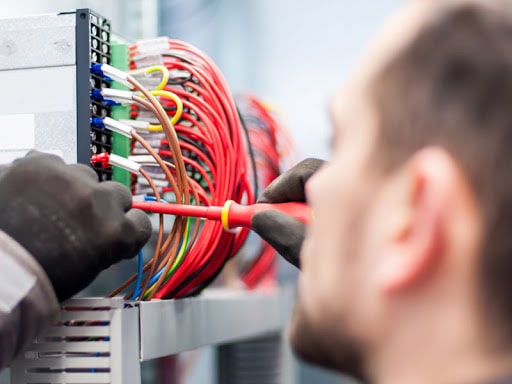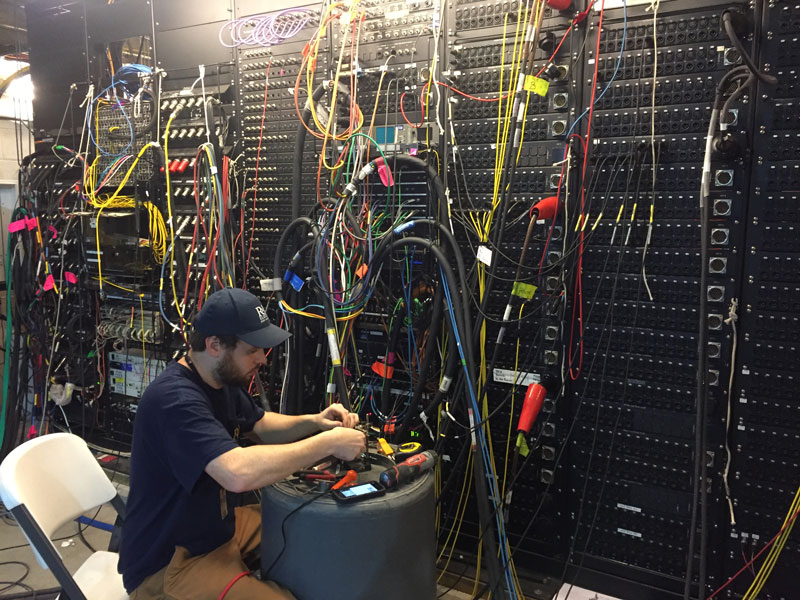
In principle, each electrical installation must be approached individually. As the measurement dates are not precisely defined by current legislation, we can rely on the Building Law Act, which stipulates that operational tests should be performed at least every 5 years.
It should be remembered, however, that if conditions harmful to our installation are at stake, the exploitation test should be performed already every year. According to the law in force, it is obligatory to have the measurements performed in order to legally live in such a building.
The regulations are even more demanding for the industry and construction works, and although most of my orders are for industrial customers, I also happen to work for an individual customer in the so-called housing estate.
It should also be remembered that making electrical measurements is not only about checking whether there is a potential difference in a given socket, i.e. “whether there is voltage”. Therefore, if an electrician comes to us to take measurements, he will usually have several meters with him. It is impossible to take measurements with an ordinary multimeter or neon detector, but sometimes we hear about such “experts”.
Such a disguise must be chased away as soon as possible! Since we are already paying for the service, don’t let it be just a “pat on the measurements”. Thanks to a properly performed service we know if nothing undesirable happens in our installation. For example, if we are planning an overhaul and we are going to lay new tiles, it is not going to turn out that we have to buy them in order to repair the electrical installation.
There is really no saving in this. We should approach it like checking the technical condition of the car – if it passes the inspection, it is safe and I can move around with confidence.
After a full inspection of the electrical system, we know whether the protections installed in our installation will work if the receiver or the cable itself is damaged, or if there are no problems with residual current circuit breakers or earthing.
In the first stage of the inspection of the installation, the measurement unit is obliged to so called inspection of the tested installation. Independent of the building and the way this installation works, contrary to appearances it is a very important activity often overlooked.
Thanks to thorough visual inspections, which are also carried out during other measurements, it is possible to determine to a large extent, e.g. whether the connections in the switchgear are not loose, etc., whether the color of the wires is maintained, and whether it is possible to carry out the inspection at all, if there is no access to some elements of the electrical system.

What kind of measurements are made in housing construction?
In most cases, the basic protection of the electrical system is simply the insulation between the active parts and the conductive parts available. Then, after visual inspection of the object, the so-called RISO measurement should be performed, i.e. the measurement of insulation resistance. And here, stairs often “appear” and many simply do not perform this measurement.
In case of a working installation, it is necessary to turn it off completely, and in order not to remove everything from the sockets, we can perform the measurement by connecting all working wires and giving measurement voltage between them and. This voltage in the case of flush-mounted installations found in detached houses should be 500 V.
When the installation is made correctly, we have a diagram to it, and the circuits are numbered, there are no problems with it. It is worse when the installation is sloppy and you have to look for everything yourself, which may make the service more expensive.
Then the continuity of connections of protective and equalizing cables should be measured. At home you can let it go in a way, because we will do it anyway when measuring the loop, as if free of charge. However, if we have even a steel garage, which has compensating connections of e.g. steel troughs, we should make this measurement. It is also done in new houses, e.g. before the installation of the measuring system, as it is impossible to measure the impedance of the short circuit loop.
Measurement of short-circuit loop impedance. In a nutshell, we measure impedance to determine the current that will flow between the wires at the time of a short circuit. This measurement is made to confirm the correct selection of protections in the installation and, in case of a correct design, the results of the measurements should be in line with the calculation part.
We measure each element of the installation. In some cases, some deviations are allowed, but this must be decided by the surveyor and also recorded in the measurement protocol.
What should the measurement protocol contain?
In addition to all the results, these are certainly the numbers of the current qualification certificates, as well as what measuring equipment was used. Data of the building and the customer.
If the sockets are not numbered, we should get a simple drawing of the rooms with the numbers of the sockets in accordance with the protocol data. A blank template for making minutes from electrical installation measurements can be found here.
I know from experience that it is worth to look for the technical conditions of the connection beforehand, there is a lot of information for the meter, including the layout of the network, as well as the values of protection of the transformer station field.
Most of the errors that I encounter during the measurements of residential buildings are the method of grounding dependent on the network layout, lack of descriptions and numbering of circuits. Contrary to appearances, in less populated areas. A small warning also for investors at the end. After reading this article you will probably notice that I often talk about this circuit, because most of the errors made by electricians.
The measurement before the installation of a measuring system. Many say that it is not necessary, because and how is it supposed to be done without power? No measurements are made e.g. of a short circuit loop. All the more reason why it is not done from the unit.
We measure the power supply from the unit only for the part of the installation which will be supplied from it in an emergency.
The measurement of the loop is completely dependent, also on the power source and it will be different even after replacing the transformer with a bigger one.
Before installing the measuring system, it is necessary to measure the insulation resistance in order to know if there is no short circuit after the voltage is applied.
Ground measurement: whether the installation is safe and thus measuring the continuity of the protective conductors or after connecting the device (e.g. to a socket) this protection is actually there. The rest of the measurements should be made after powering from the target system.

